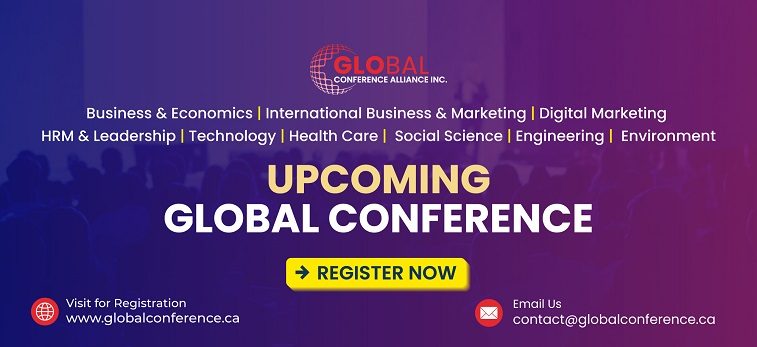Writing a paper takes effort, and once it’s done, you might want to share it with others who understand your topic. Many people who write on economics often wonder how they can take that next step. That’s when the question comes up—how can I submit a paper to an economics conference in the USA?
Submit a paper by finding a relevant call for papers. Follow all guidelines, prepare a clean PDF, and upload online. Add abstract, JEL codes, and pay fees. Ensure it’s anonymous, well-written, and submitted before the deadline.
Want to know what happens after submitting or how to choose the right conference? Keep reading, because this article explains every step, from picking the best event to preparing your final presentation. You’ll find all the important details in one place.
How Can I Submit a Paper to an Economics Conference in the USA?
Submitting a paper to an economics conference in the USA involves several key steps, and it’s essential to be meticulous with each one. Here’s a breakdown of the process:

1. Find a Relevant Conference (Call for Papers):
Before anything else, you need to identify the right venue for your research. The scope of economics is vast, so it’s important to target conferences that align with your subfield. A good match increases your chances of acceptance and ensures your work is seen by the right audience.
- Identify Your Niche: Economics is broad. Look for conferences that align with your specific field of research (e.g., labor economics, macroeconomics, development economics, environmental economics, etc.).
- University-Sponsored Conferences/Workshops: Many universities host smaller, more specialized conferences or workshops throughout the year. Keep an eye on their economics department websites or relevant research centers.
- Look for “Call for Papers” (CFP): This is the official invitation from the conference organizers for submissions, typically found in the call for papers for upcoming conferences in USA, and it outlines the themes, deadlines, and submission requirements.
2. Understand the Submission Guidelines:
Once you’ve identified a conference, carefully read the specific submission guidelines on their official website. These can vary significantly:
- Submission Deadlines: These are strict and non-negotiable. Mark them on your calendar.
- Submission Platform: Most conferences use online submission systems (e.g., ConferenceMaker, Ex Ordo, EasyChair, or proprietary systems). You’ll need to create an account.
- Paper Format:
- File Type: Usually, PDF is preferred, but some might accept Word or LaTeX files.
- Length Limits: Conferences often have strict page limits (e.g., 20-35 pages, including references, figures, and tables). Exceeding these limits can lead to automatic rejection.
- Formatting: Margins, font size, line spacing, citation style (e.g., Chicago Manual of Style Author-Date, APA), and heading structure. Some provide specific templates (e.g., LaTeX style files).
- Abstract Requirements:
- Word Limit: Typically 100-300 words.
- Content: A clear summary of your research question, methodology, key findings, and contributions.
- No Equations/Diagrams/Footnotes: Often specified for abstracts.
- Keywords and JEL Codes: You’ll usually need to provide a few keywords and relevant Journal of Economic Literature (JEL) codes to help categorize your paper and assign appropriate reviewers.
- Anonymity/Double-Blind Review: Many conferences, especially for individual paper submissions, use a double-blind review process. This means:
- No Author Information in the Paper: Your name, affiliation, and any identifying information should be removed from the paper’s title page, headers, footers, and acknowledgements.
- Neutral Self-Citations: If you cite your own previous work, do so in a neutral manner (e.g., “XYZ et al. showed” instead of “We showed in our previous work”).
- Author information is typically submitted separately through the online system.
- Submission Fees: Many reputable conferences (especially larger ones) charge a submission fee, which is generally non-refundable. This helps cover the costs of the review process.
- Originality/Prior Publication: Most conferences require that the submitted paper has not been previously published or accepted for publication elsewhere. Simultaneous submission to other conferences or journals is often discouraged or explicitly prohibited, though some may allow it with clear disclosure.
- Data and Code Availability: Increasingly, conferences (and journals) encourage or require authors to provide public access to the data and code used in their analysis for reproducibility purposes. This might be submitted as supplementary material.
- Disclosure Statements: You may need to submit a separate disclosure statement outlining any potential conflicts of interest.
- Presentation Commitment: If your paper is accepted, at least one author is typically required to register for the conference and present the paper in person (or virtually, depending on the conference format).
3. Prepare Your Paper:
This is the heart of the process. A well-structured, clearly written, and thoughtfully argued paper increases your chances of acceptance. Focus on clarity, precision, and contribution to the literature. Be sure to meet academic standards and use clean, professional formatting.
- Strong Research: Ensure your paper is well-researched, thoroughly analyzed, and contributes meaningfully to the field.
- Clear and Concise Writing: Economics papers should be precise and avoid jargon where possible. If technical terms are necessary, define them.
- Structure: Follow a standard academic paper structure: Abstract, Introduction, Literature Review, Theoretical Framework/Model, Data and Methodology, Results, Discussion, Conclusion, References, Appendices.
- Proofread Meticulously: Errors in grammar, spelling, and formatting can reflect poorly on your work. Get feedback from colleagues.
- Adhere to Formatting: This cannot be stressed enough. If a conference provides a LaTeX template or specific Word formatting rules, use them exactly.
4. The Submission Process (General Steps):
Once your paper is ready and aligned with the guidelines, it’s time to actually submit it. This step involves uploading your paper and metadata into the submission portal. To do so, follow the guide:
- Access the Online System: Go to the conference’s website and find the “Submission” or “Call for Papers” link.
- Create an Account: If you don’t have one, register on their submission platform.
- Start a New Submission: Select the appropriate track or topic area for your paper.
- Enter Metadata: Provide the paper title, abstract, keywords, JEL codes, and all author information (names, affiliations, emails). Ensure you identify the corresponding author.
- Upload Files:
- Main Paper: The anonymized PDF of your full paper.
- Title Page (Separate): If required for double-blind review, a separate file with all author information.
- Supplementary Materials: Data, code, additional appendices (if applicable).
- Disclosure Statements: Separate files from each author.
- Pay Submission Fee: Complete the payment process if applicable.
- Review and Confirm: Double-check all information and uploaded files before final submission. Once submitted, you usually can’t make changes until after a decision is made.
- Receive Confirmation: You should get an email confirmation with a submission ID. Keep this for your records.
5. After Submission:
Your job isn’t over once you submit. You’ll need to wait for the review decision, prepare to present if accepted, or plan your next steps if the paper is rejected. Acceptance is a great opportunity—rejection is a common part of academic growth.
- Wait for Notification: The review process can take several weeks to months. The CFP will usually state when authors will be notified of acceptance or rejection.
- If Accepted: Congratulations! You’ll then need to:
- Register for the conference by the specified deadline.
- Prepare your presentation (slides, potentially a poster).
- Potentially revise your paper based on reviewer feedback for the conference proceedings.
- If Rejected: Don’t be discouraged. Rejection is common in academia.
- Carefully read any reviewer feedback. It’s an opportunity to improve your paper.
- Consider submitting to a different, perhaps smaller or more specialized, conference, or revising it for journal submission.
Submitting to an economics conference in the USA can be a competitive process, but by being well-prepared and adhering to all guidelines, you significantly increase your chances of success.
How to Choose the Right Economics Conference for Your Paper in the USA?
There are many economics conferences, but not all of them fit your topic. Some focus on theory, others on real problems or business trends. Picking the wrong one might waste your time and effort. Let’s learn how to choose the right one for your paper.
Know Your Paper’s Focus
Every paper has a certain message or idea it explains in detail. If your work talks more about theories or models, go for academic events. Papers with real-world problems or ideas for change fit policy-based events. Business-related papers often belong in industry-focused events. Before selecting a conference, make sure the event aligns with your academic background and field focus—some may have specific requirements regarding eligibility to attend economics conferences in the USA, particularly for paper submissions or student tracks.
Check the Audience Type
Different conferences attract different groups of people with specific interests. A paper with hard data or technical terms suits professors or researchers more. If your ideas are easy to understand or relate to daily life, choose broader events. Look at old speaker lists or attendee details to understand the group. If the audience matches your topic, your paper will likely get noticed and understood better.
Review Conference Themes
Most conferences set a topic or theme they want to focus on. This helps them choose papers that match what they want to discuss. Always read the theme before you write or submit anything. If your paper fits their theme, you’ll have a better chance of being selected. Even a well-written paper won’t be picked if it talks about something unrelated. So, check carefully before sending your work.
See the Event Format
Conferences can be face-to-face, online, or sometimes both formats. Some people like in-person talks, while others prefer speaking online. If you’re okay with traveling and meeting others, in-person is good. Online is great if you want to save time or money. Also, find out if the event has feedback sessions or just paper talks. That helps you decide which one suits your comfort level and goals.
Look into Deadlines and Fees
Every event has important dates and costs you need to know early. Write down the deadline to send your paper so you don’t miss out. Also, check when to register and if there’s a late fee. Some events may be free, but others can cost a lot. See what’s included, like meals, notes, or recordings. Knowing the price and dates helps you plan everything much better.
Finding the right conference needs time and careful reading of details. Always check if your paper topic matches the event goal or theme. Don’t forget to look at deadlines, costs, and who attends the event. A good match can help your paper get noticed and appreciated.
What Happens After Your Paper Is Accepted for the USA Economics Conference?
Even after your paper has been accepted, the work is not over. There are a few more important steps you need to complete. Each step helps you get ready for the big day. Keep reading to know exactly what comes next.
Complete Your Registration
Once your paper is accepted, the first thing you must do is register. Without registering, you won’t be allowed to take part in the conference. Visit the event website and look for the registration page. You’ll find details like cost, last date to register, and what’s included. Some events offer early discounts, so don’t wait too long. If there are different tracks or options, make sure to pick the one that matches your role.
Plan Your Travel
After registering, it’s time to think about how you’ll get there. Check the conference city and look up flight or train options. Try to book your travel early so you don’t spend too much money. Also, look for hotels near the event to save time on travel. Make a list of things you need to carry. A small notebook, charger, and your printed schedule can be really helpful.
Make Your Presentation
Now that your paper is in, you’ll need to prepare your slides. Keep your presentation clear and short so people can follow easily. Use pictures, graphs, or charts to make things simple and fun. Depending on the conference, accepted papers may be assigned to oral presentations or poster sessions at economics conferences, especially for student submissions or early-stage research. No matter the format, speak with confidence and practice before the day comes.
Submit Final Paper
Most events will ask you to send a final version of your paper. This version is called a camera-ready copy and must follow their layout rules. Check your email or the event website for the exact format and deadline. Fix any spelling errors or mistakes and save the file in the right type, usually PDF. This step is very important because the final copy will be shared with the public or event readers.
Get Ready for Q&A
During or after your presentation, people might ask you questions. You don’t have to know everything, but you should understand your own work well. Think about what someone might ask and prepare simple answers. Stay calm, smile, and be honest if you don’t know something. Listening carefully and replying kindly can make a big difference. It shows respect for the audience and confidence in your topic.
After your paper gets accepted, be ready for the next few steps. A little planning now will make your event day go much smoother. Just follow each task one by one without rushing. With good effort, you’ll be fully ready to present.
Can You Submit the Same Paper to Multiple Conferences?
Sometimes you might feel unsure about sending your paper to just one event. It can seem smart to try more than one to increase your chances. But there are some important things you should know first. Let’s look at what’s okay and what’s not.
Basic Submission Rule
Most conferences clearly ask that the paper you send is not under review anywhere else. This means you can’t send the same exact paper to two events at the same time. It’s not just a rule—it’s also about being fair. If both accept it, you’d be giving the same work to two places, which isn’t allowed.
Why It’s a Problem
Sending the same paper to two events at once can lead to confusion. Both events may plan to publish your work or ask you to present. This can cause problems if they find out, and they often do. It might lead to your paper getting removed from both places, which can feel very disappointing.
Slightly Different Papers
Your paper can be written in two different versions if you wish to attend two similar events. Change the focus, the examples, or the data, so each one feels fresh. Just make sure you’re not copying the same work word-for-word, even if the topic is close. That way, you can stay honest and avoid problems.
Be Open About It
If you’re unsure what the rules are, just ask the event team. Some may allow very short papers if they are early ideas. Others may be strict and say no to anything shared before. It’s always better to ask than to guess. Being open and clear can help you avoid trouble later.
Stick to One First
The best thing to do is send your paper to one conference and wait. If they say no, you can try somewhere else. If they say yes, then you can focus on that event fully. This way, you respect the rules, and you give your best to the event that chose you.
Sharing your paper with more than one event sounds easy, but it’s tricky. Most events expect honesty and want new, original work. If you play fair, your work gets the right kind of attention. Always choose the right way over the fast way.
Key Deadlines You Should Watch for the Economics Conference in the USA
Planning to take part in an economics conference means keeping track of important dates. Missing even one deadline can cause big problems. To avoid stress and confusion later, make sure you follow the timeline closely.
- Abstract Submission: This is the first step, where you send a short summary. Make sure it clearly explains your topic before the given deadline.
- Full Paper Deadline: After your abstract is accepted, you must send the full version. Double-check spelling, grammar, and layout before turning it in.
- Acceptance Notification: You’ll get an email or message saying if your paper got picked. Keep checking your inbox around the expected reply date.
- Registration Deadline: After getting accepted, you must register to join the event. If you don’t, your paper might get removed from the list.
- Payment Cutoff: Many conferences ask you to pay when you register. Late payments may cost more or even cancel your spot completely.
- Camera-Ready Submission: This is the final copy of your paper. You send this version after editing everything as per the event’s rules.
- Presentation Dates: These are the actual days when the event happens. Mark them on your calendar so you can attend and present on time.
Keeping up with deadlines helps your paper move through each step smoothly. Each date has a clear purpose, so don’t treat it lightly. Being on time shows you’re serious and ready. Stay organized and enjoy the experience.
Commonly Asked Questions
Submitting a paper to a conference can feel confusing at first, especially if you’ve never done it before. You might have a lot of small but important questions in mind. This section answers the most common questions to help make the process easier.
How Do I Know If My Paper Is Good Enough?
Papers with clear topics, solid research, and useful findings are considered good. It should add something new or interesting to the field of economics. You don’t need to be perfect, but your work should be honest and well-structured. If possible, ask someone to read it and give feedback.
What Is a Call for Papers?
A call for papers is an official invitation to send your research. It includes the conference topic, submission rules, and deadline. You’ll find it on the conference’s website or event listing. Reading it carefully helps you know what kind of papers they want.
Can I Submit as a Team?
Yes, many papers are written and submitted by more than one person. When submitting, you must list all authors with their names and details. Usually, one person is chosen as the main contact, called the “corresponding author.” This person handles all updates from the conference team.
Will I Get Feedback After Submitting?
Some conferences give short notes on why your paper was accepted or rejected. Others may not give any feedback at all. If they do give comments, use them to make your paper better. Feedback helps you learn, even if your paper doesn’t get accepted.
Do I Have to Present the Paper Myself?
In most cases, at least one author must attend and present the paper. If you can’t go, sometimes another author can do it for you. Some events allow virtual presentations using video calls. Check the rules before submitting to be sure.
Can I Update My Paper After Submitting?
Usually, once you submit, you can’t make changes unless the conference allows it. If your paper is accepted, you may get a chance to fix small errors. The final version is often called the “camera-ready” copy. Make sure your first submission is as complete as possible.
Is It Okay to Use Charts and Tables?
Yes, charts and tables make your paper easier to understand. They should be clear, labeled, and match what you explain in the text. Don’t overuse them—only add what helps show your points. Follow the format rules given by the conference.
How Long Should My Paper Be?
Each event has its own rules, but most papers are around 20 to 35 pages. That includes everything: text, tables, references, and figures. If you go over the page limit, your paper might get rejected. Always check the paper length rule in the submission guide.
What If English Is Not My First Language?
That’s okay—many people submit papers written in English as a second language. Just make sure your writing is clear and easy to follow. You can use grammar tools or ask someone to check it for mistakes. The main goal is for others to understand your ideas.
Do I Get a Certificate or Proof of Presentation?
Yes, most conferences give certificates to people who present papers. You might get it as a printed copy or by email after the event. This certificate can be useful to show your work and experience. It’s a nice bonus for all your effort.
End Note
Once you know what to do, sending your paper becomes much easier. From finding the right event to following the rules, each step helps you move forward. Now you clearly understand the process of how can I submit a paper to an economics conference in the USA, just follow the steps and submit your work with care.
To end, make sure to stay organized, read the guidelines fully, and never rush your submission. Good formatting and clear writing can make a big difference. Keep learning, stay confident, and best of luck with your paper!







